Venturing Through London’s Diverse Neighborhoods
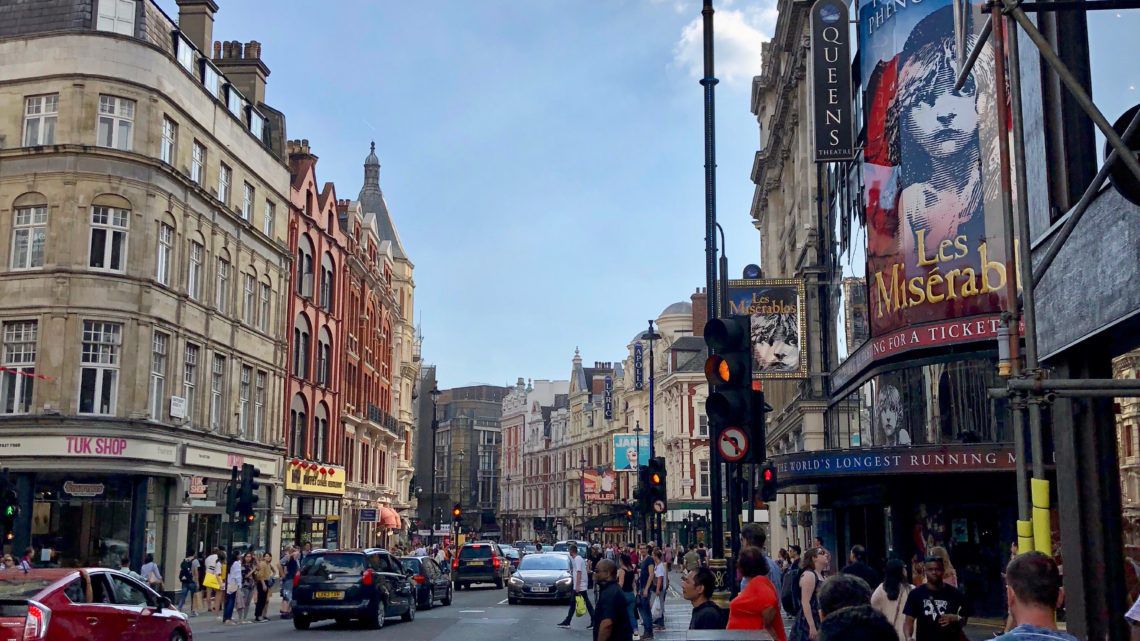
It was my final full day in London! Although my time in this wonderful city was coming to an end, I already felt like I saw most of the highlights. I discovered amazing pieces of architecture like Westminster Abbey and St. Paul’s Cathedral and also learned about British history and culture. Despite all this, there were still several diverse neighborhoods of the city I had yet to explore. After a short rest from the previous night out, I set off on my next sightseeing journey.
Buckingham Palace
I hopped on the Underground towards Green Park, which is right near one of London’s most famous royal attractions: Buckingham Palace! I knew I wasn’t going to leave the city without visiting the queen’s city residence! The palace is located on a crowded roundabout just outside of Westminster.
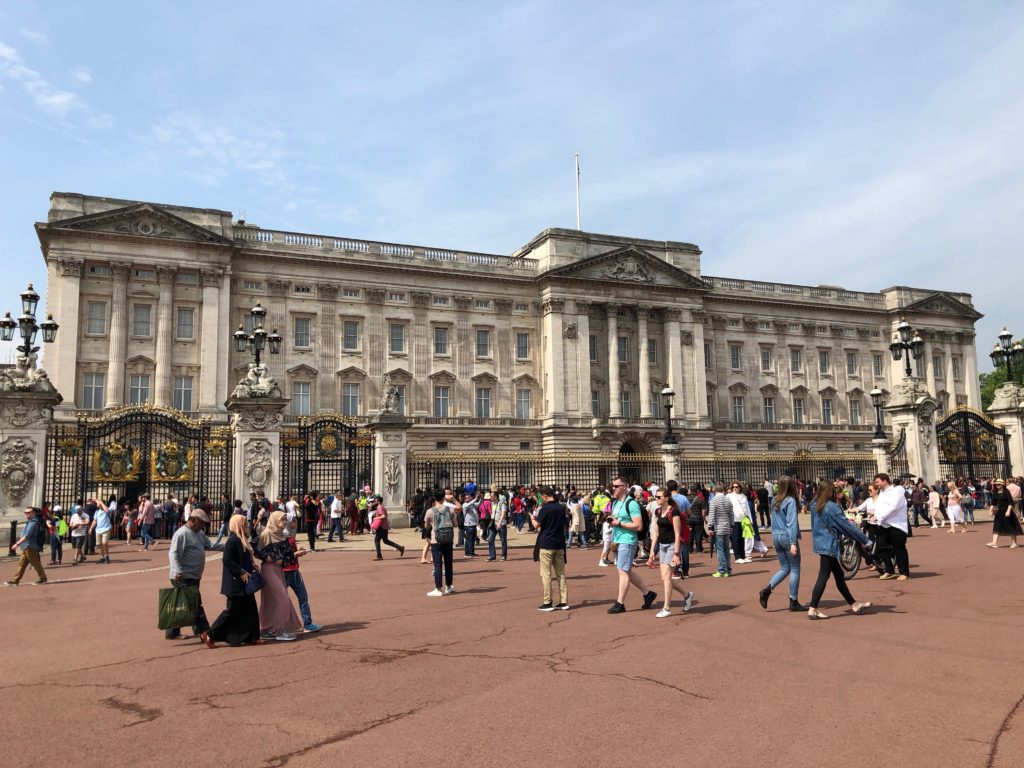
The palace was designed in the Neoclassical style by architects Edward Blore and John Nash. The primary façade, the East Front, is symmetrical in its design, with three groups of Corinthian columns topped with pediments. A regular pattern of windows lines the rest of the building face. The palace is huge, consisting of a total of 775 rooms! It is also the location of the “Changing of the Guard” ceremony, which I sadly missed during my
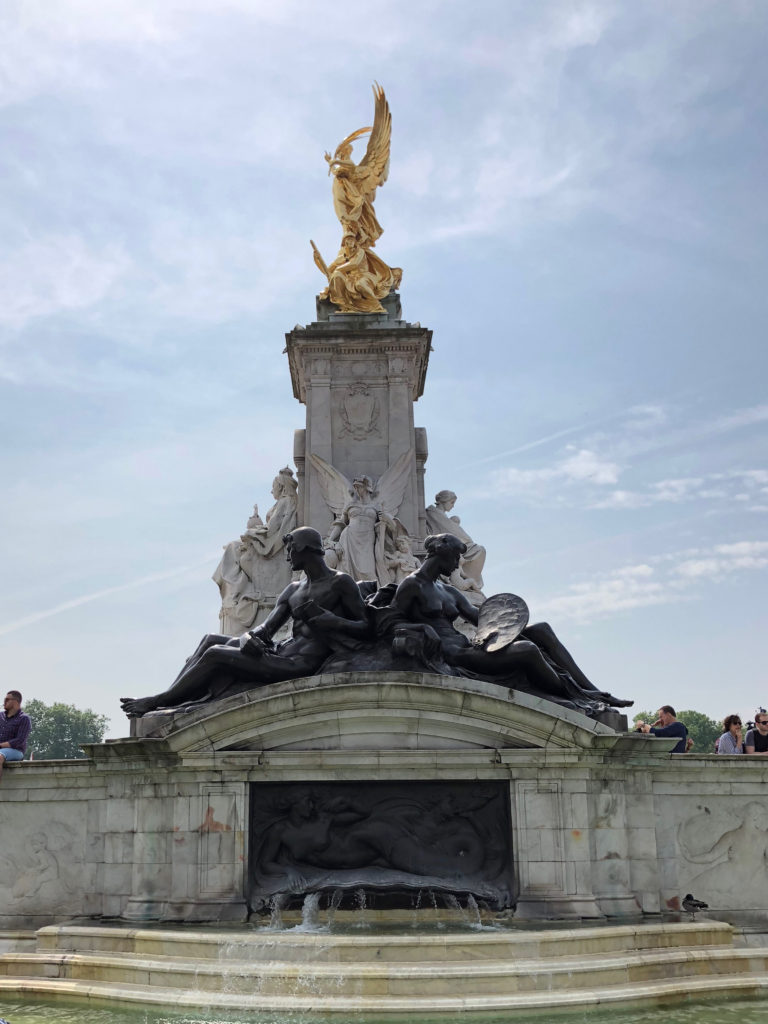
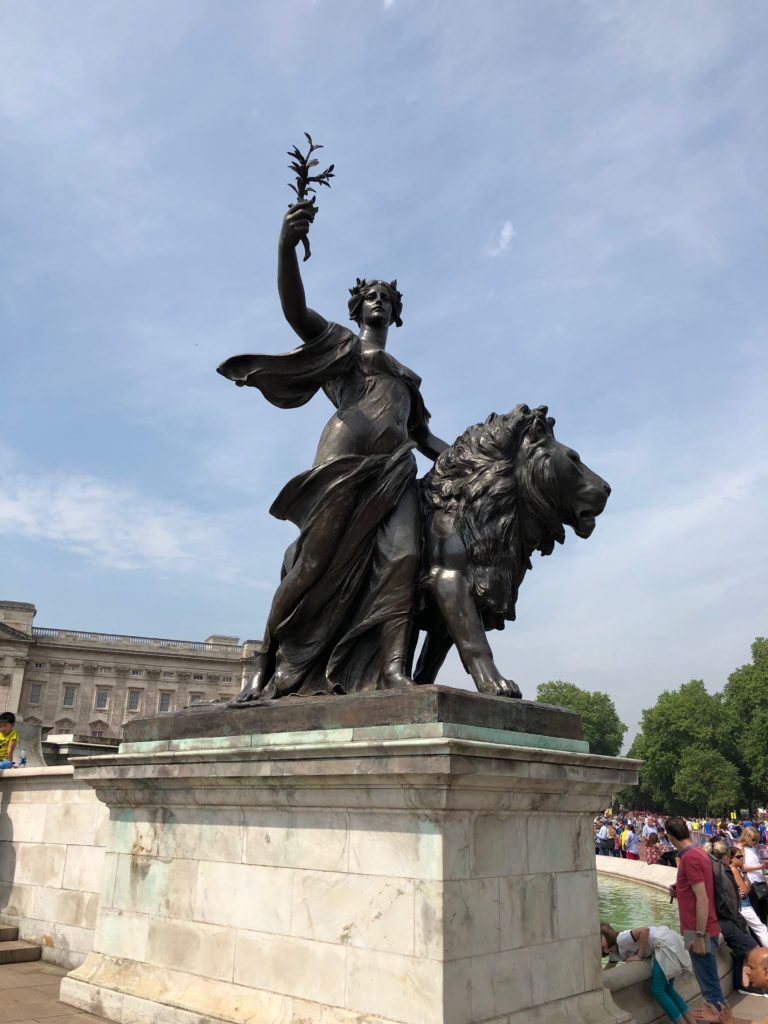
At the center of the roundabout directly in front of the palace is the Victoria Memorial: a magnificent statue in honor of the former queen! The main pylon is made of marble and houses a golden statue of Queen Victoria on top. Other bronze statues decorate the fountain that surrounds the central monument.
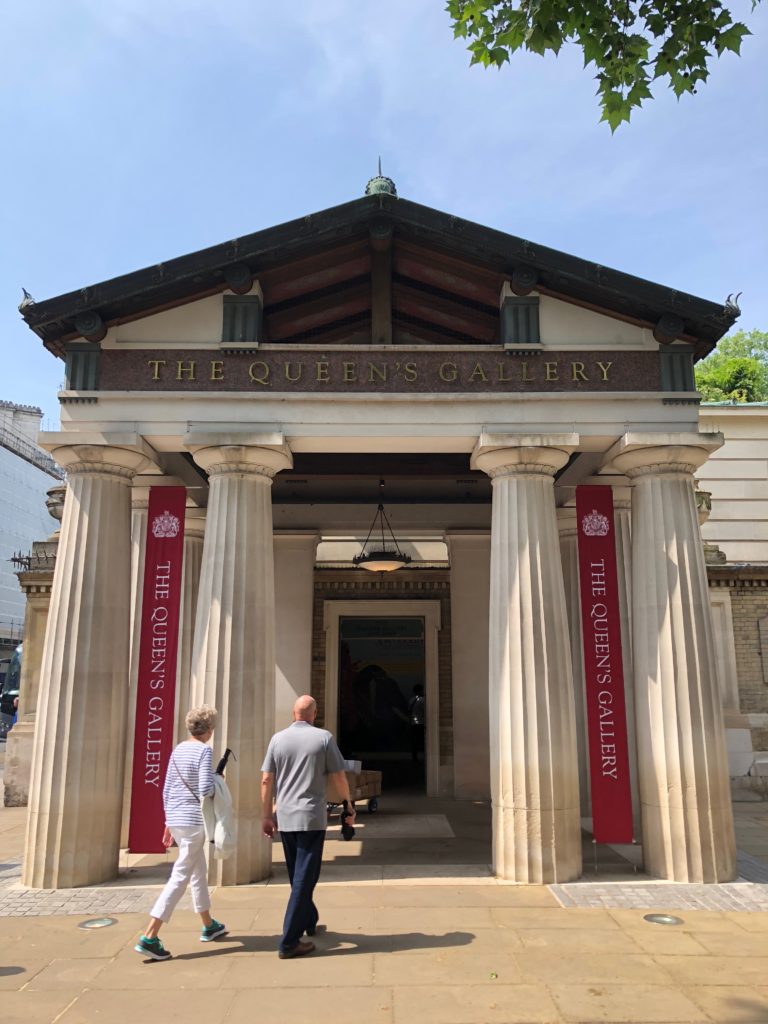
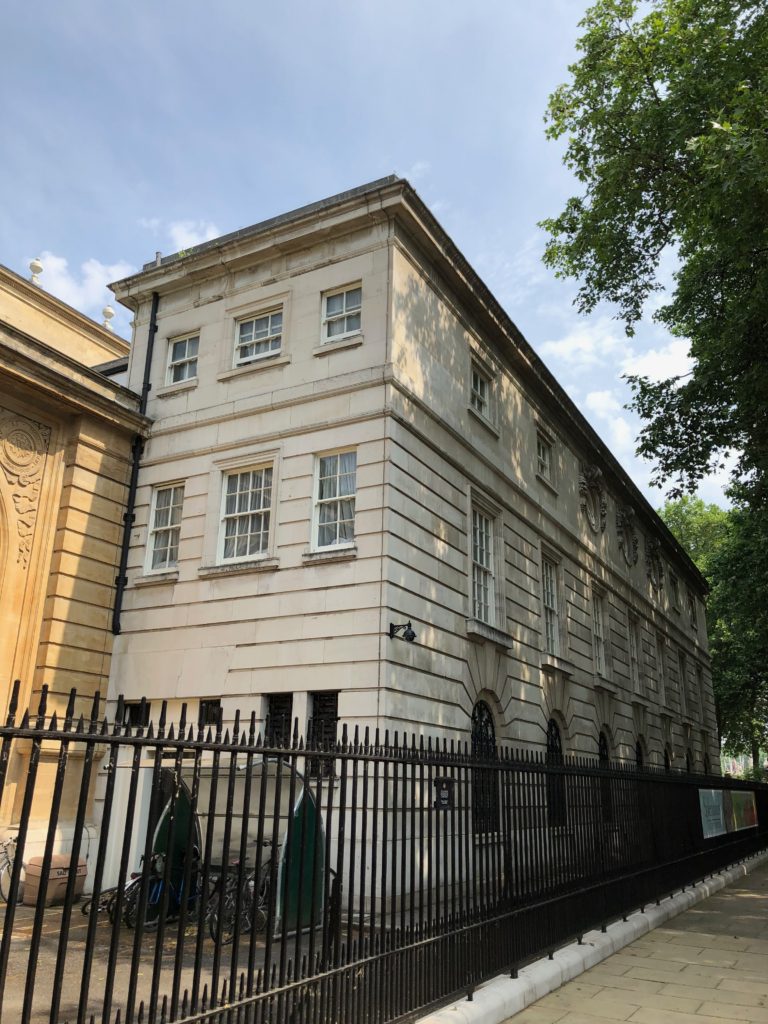
The area in front of the palace was extremely crowded that day, as it was the Vitality Westminster Mile: a yearly racing event that started with the 2012 Olympics. Due to this race, I had to fight my way through the crowd. I went around to the side of the palace, where the service areas, as well as the Queen’s Gallery, are located. I popped inside the gallery, which also includes a gift shop. The rest of the palace is only open during the summer months.
St. James’s Park
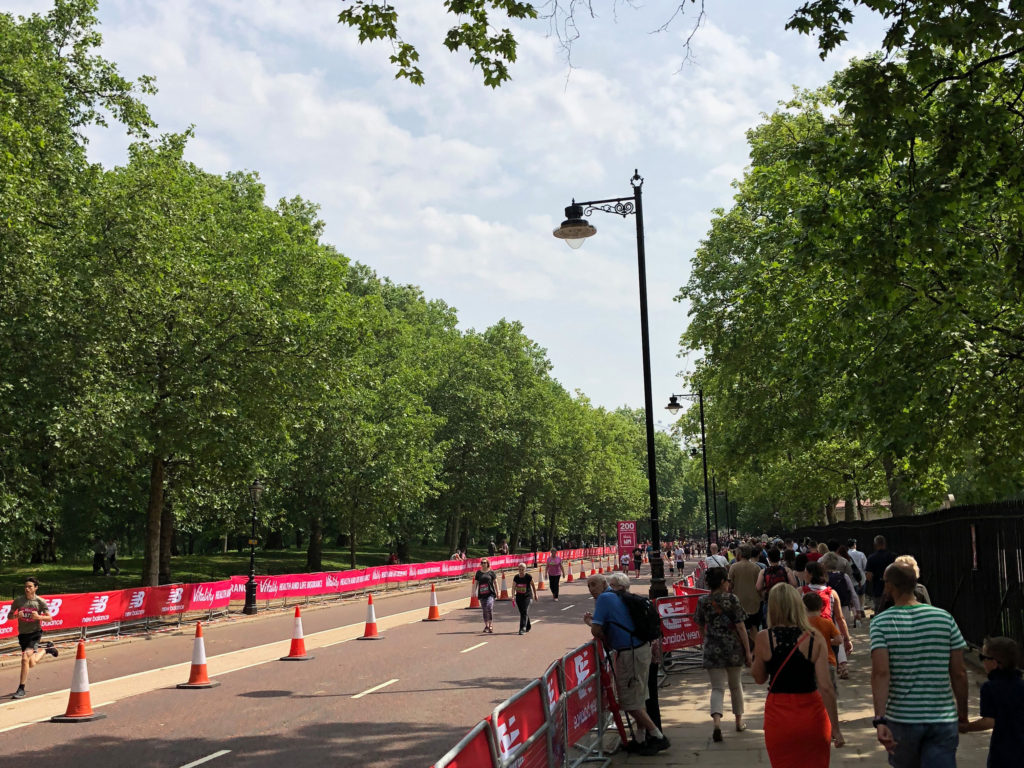
I followed the street towards Westminster and Big Ben. Due to the high number of runners participating in the Westminster Mile, I had to wait for a few minutes before I was allowed to cross the street. Once I got across, I took a quick stroll through St. James’s Park!
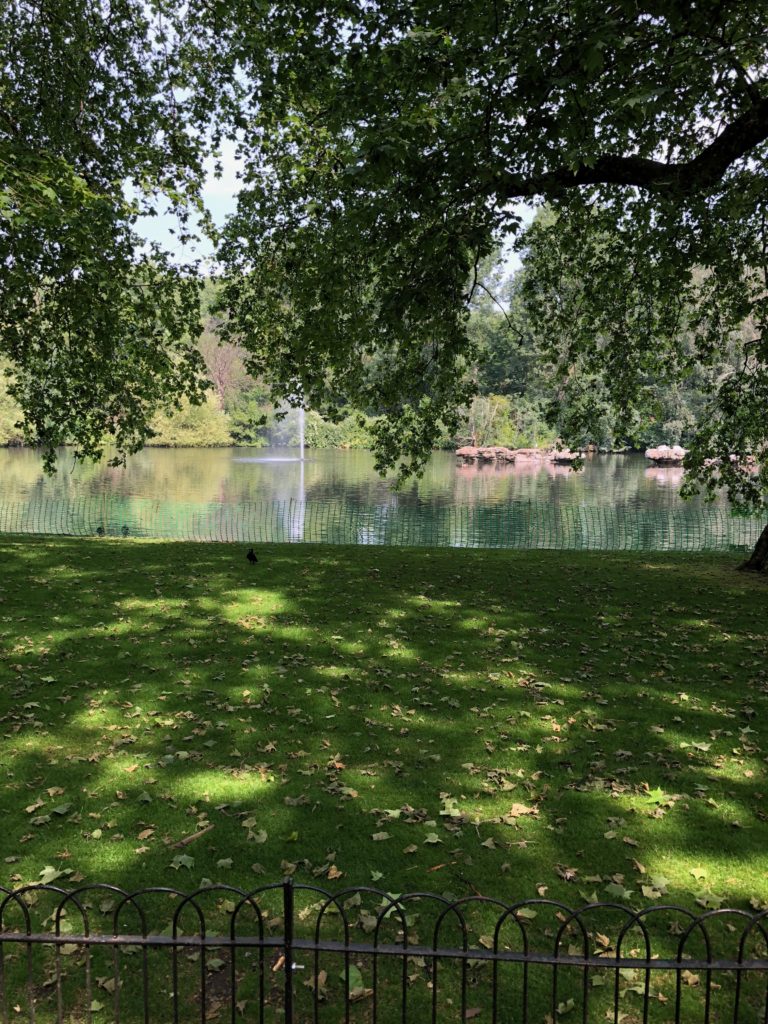
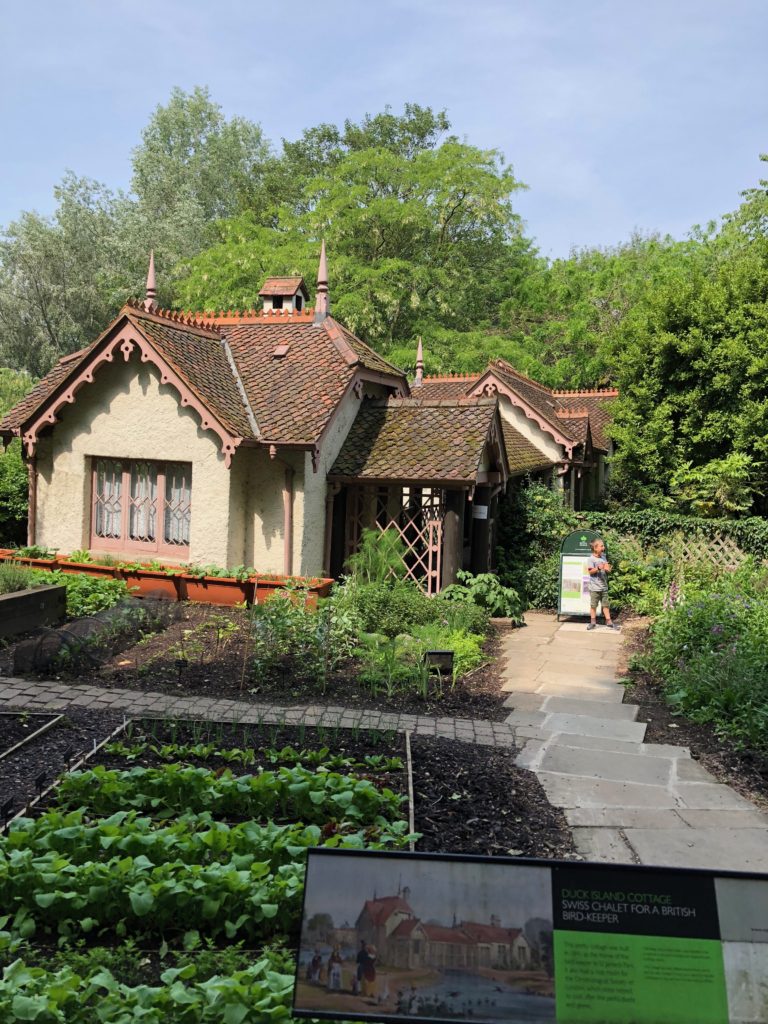
This green area bridges the gap between Buckingham Palace and the Houses of Parliament. It was beautiful on this gorgeous spring day. I even passed by Duck Island Cottage: a cute little house in the park!

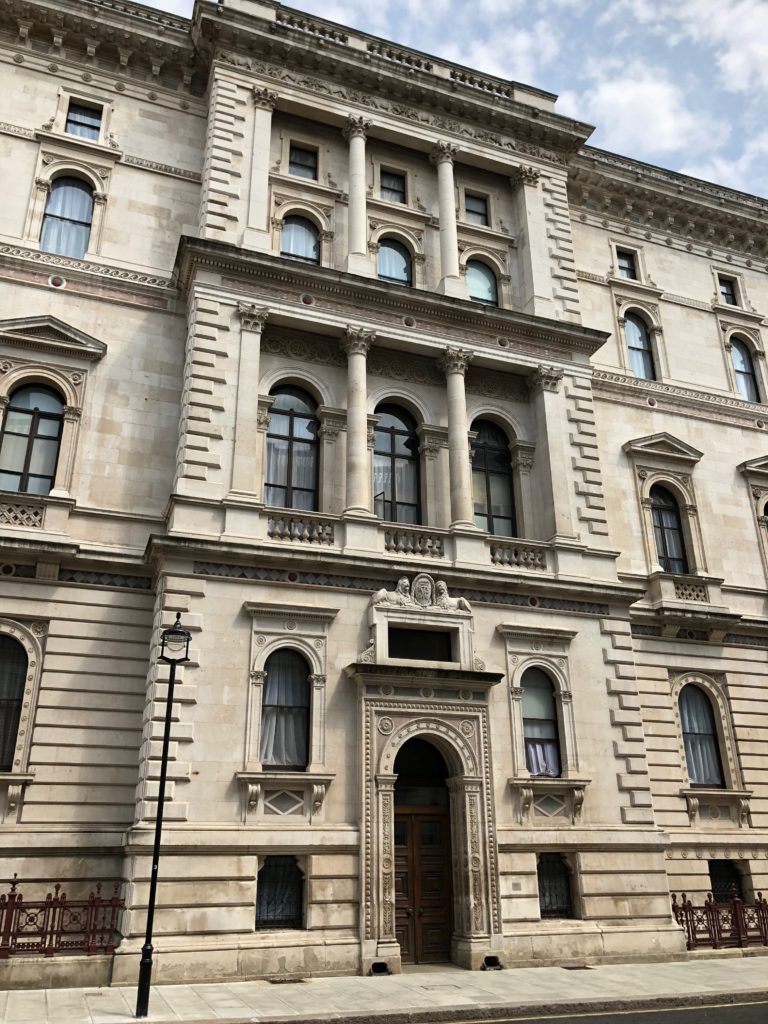
Eventually, I arrived back in Westminster. I still can’t get over the architecture here! The buildings, especially the white Edwardian Baroque ones, give off that British charm that I always pictured when visiting London!
London Eye
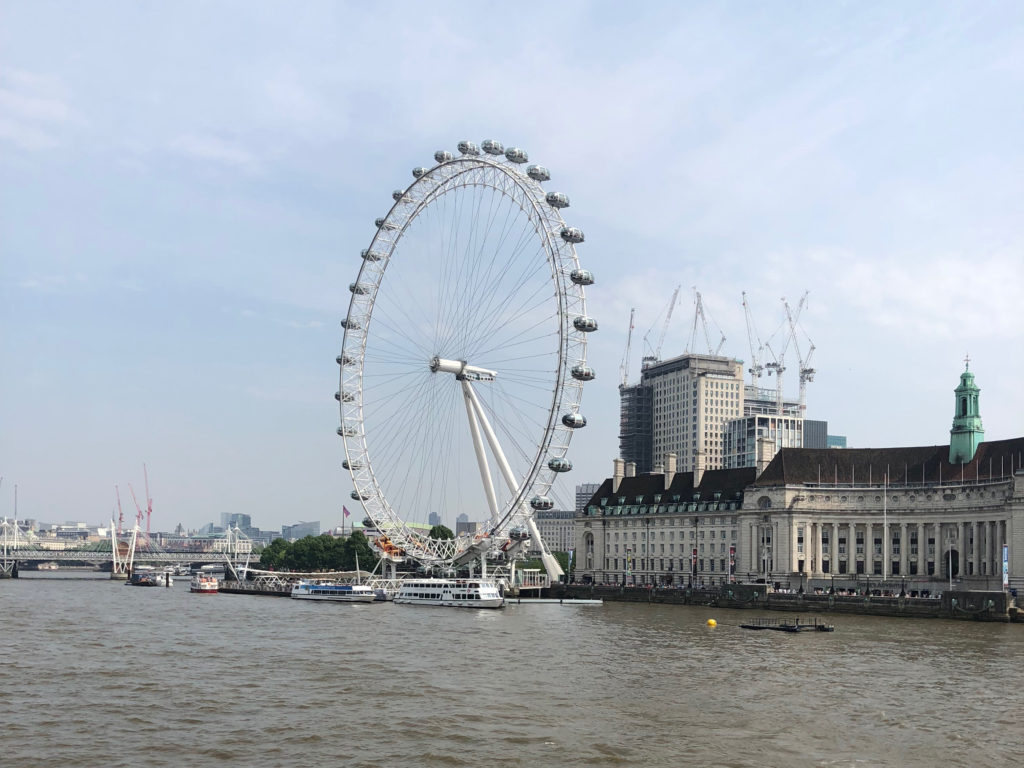
After passing Big Ben, I headed across the Westminster bridge towards yet another observation point in London: The Coca-Cola London Eye! This Ferris wheel is the tallest observation wheel on the continent. It is also one of the few attractions that
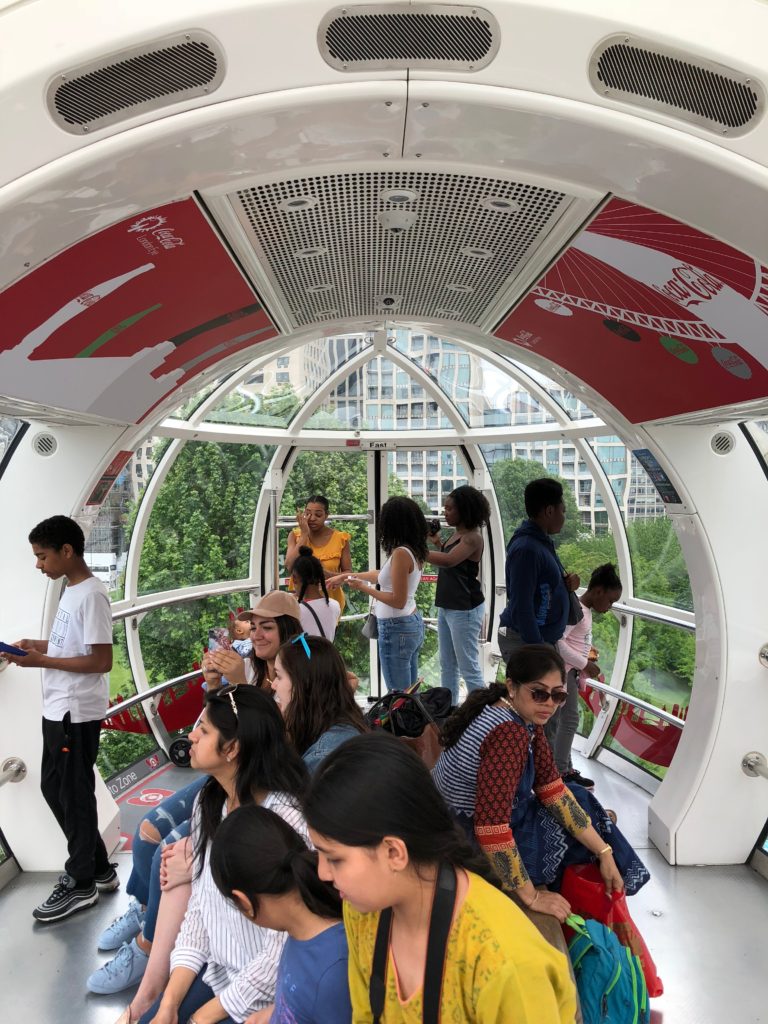
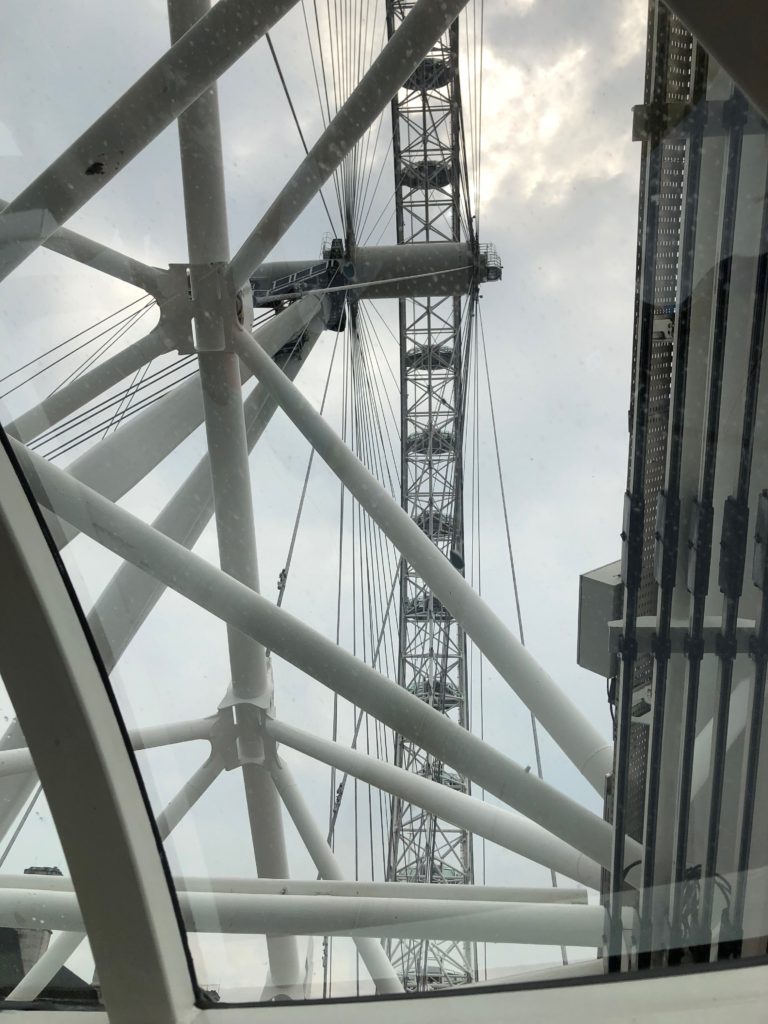
About an hour later, I finally entered my capsule and began my ride with several other tourists. The capsule started its slow ascent along the circumference of the wheel.
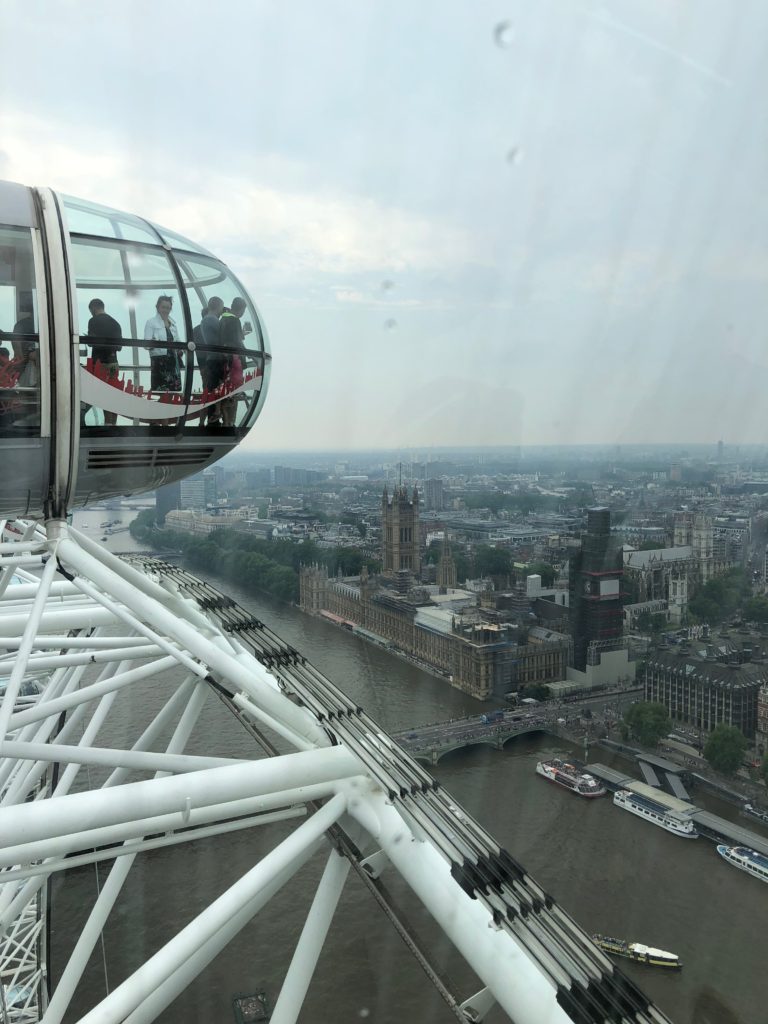
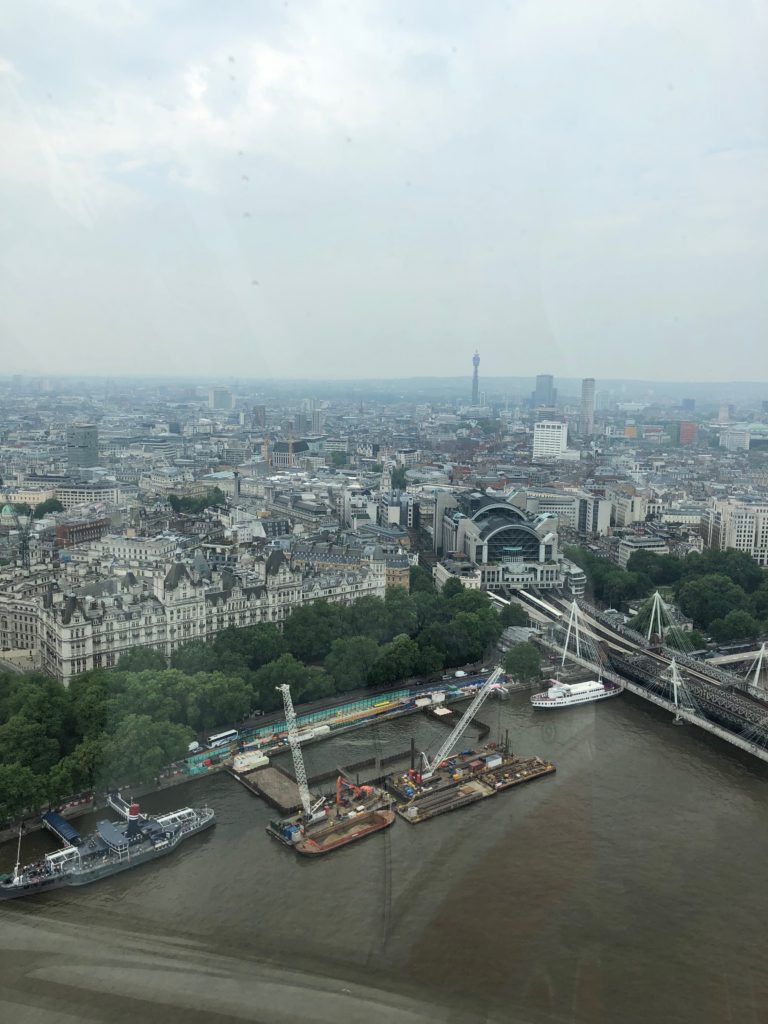
From our capsule, I could see many of London’s famous landmarks, including Big Ben and Charing Cross Station. The capsule remained upright as it climbed the wheel until we eventually reached the summit on top of the entire structure. The London Eye was certainly a unique way to get a view of the city’s skyline. It is also an incredible piece of work, made from British steel, Dutch engineering, and parts from France, Germany, and Italy!
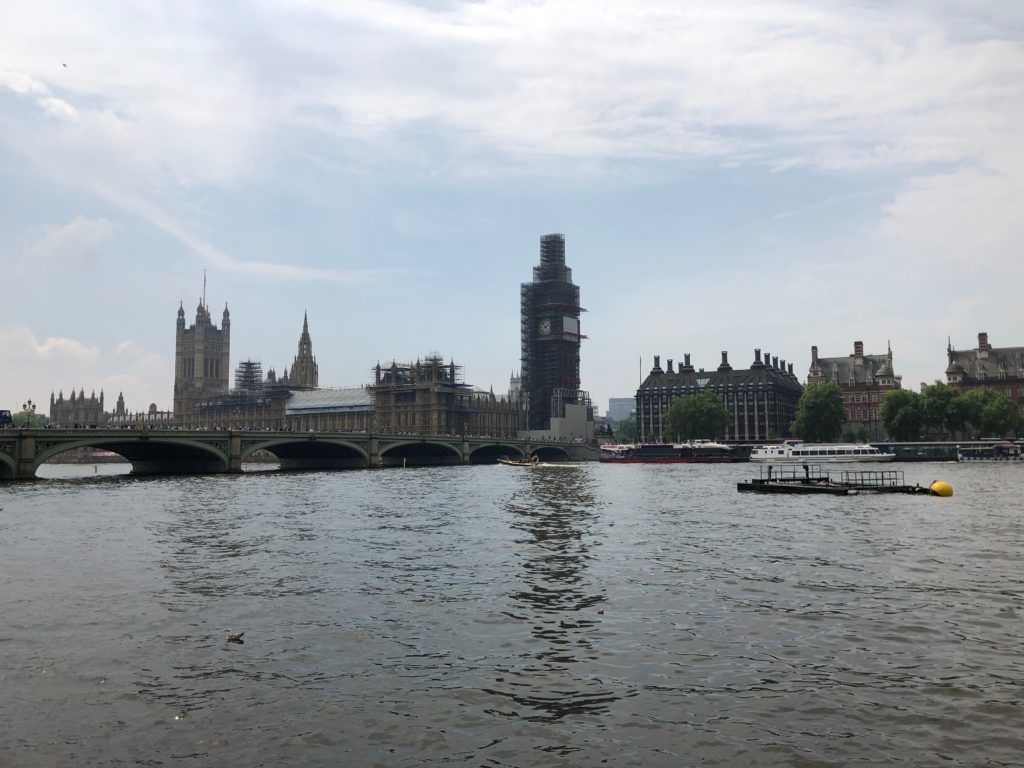
Although I enjoyed my ride on the wheel, the long lines and expensive entrance fees make this one of the top tourist traps in the city. Still, as a first time visitor in London, it was definitely something I wanted to check off my list. I went to a nearby fast-food restaurant for some more fish and chips while enjoying a view of Big Ben and the Houses of Parliament from across the river.
South Bank
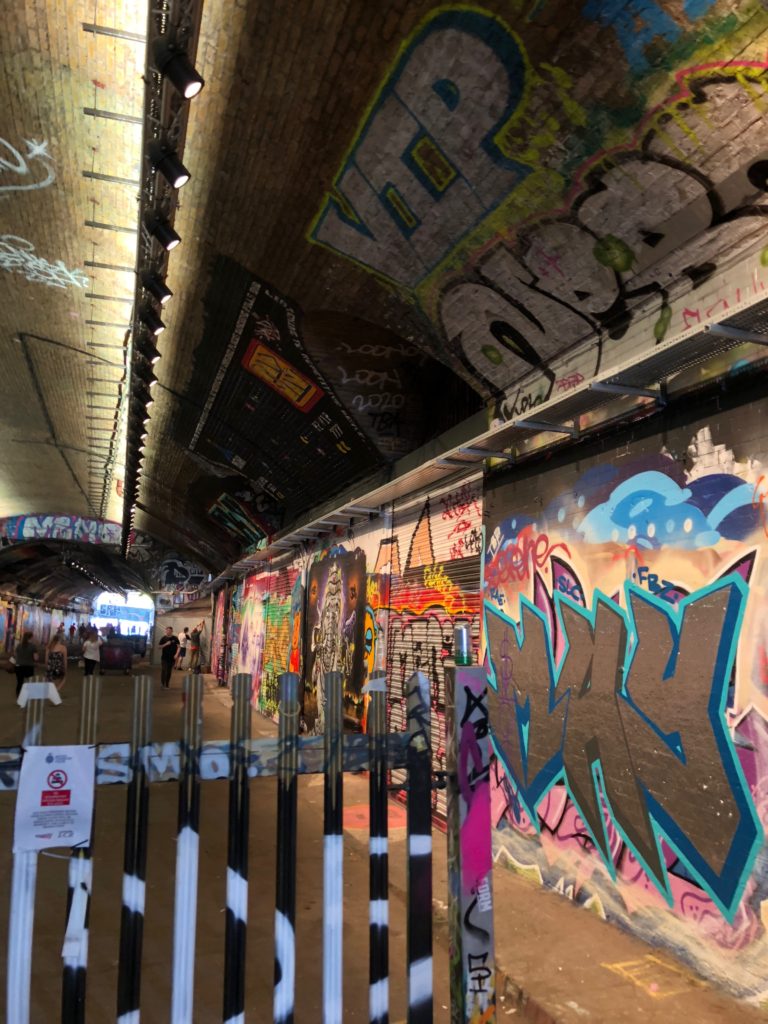
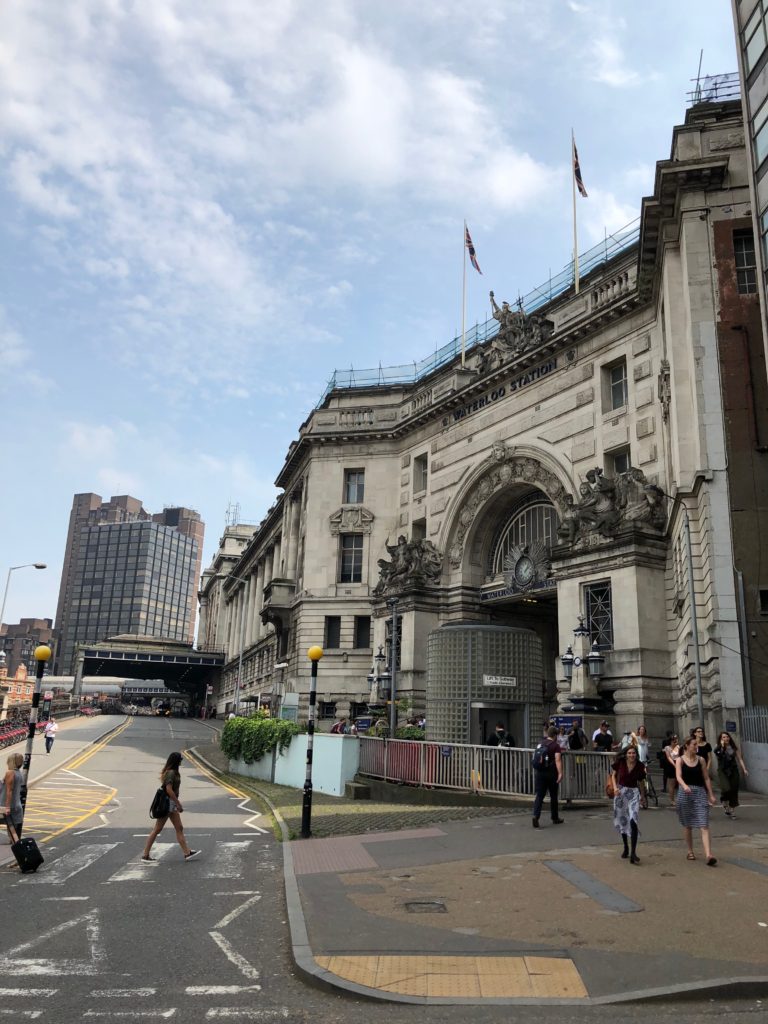
After lunch, I set out for a walk to explore more of London’s diverse neighborhoods. I started with South Bank, where the London Eye is located. While exploring the area around Waterloo Station, I stumbled upon Leake Street: a tunnel below the station where graffiti covers the walls. It certainly reminded me of Wynwood: the arts district in Miami. I eventually came to the Victory Arch: the main entrance to the station.
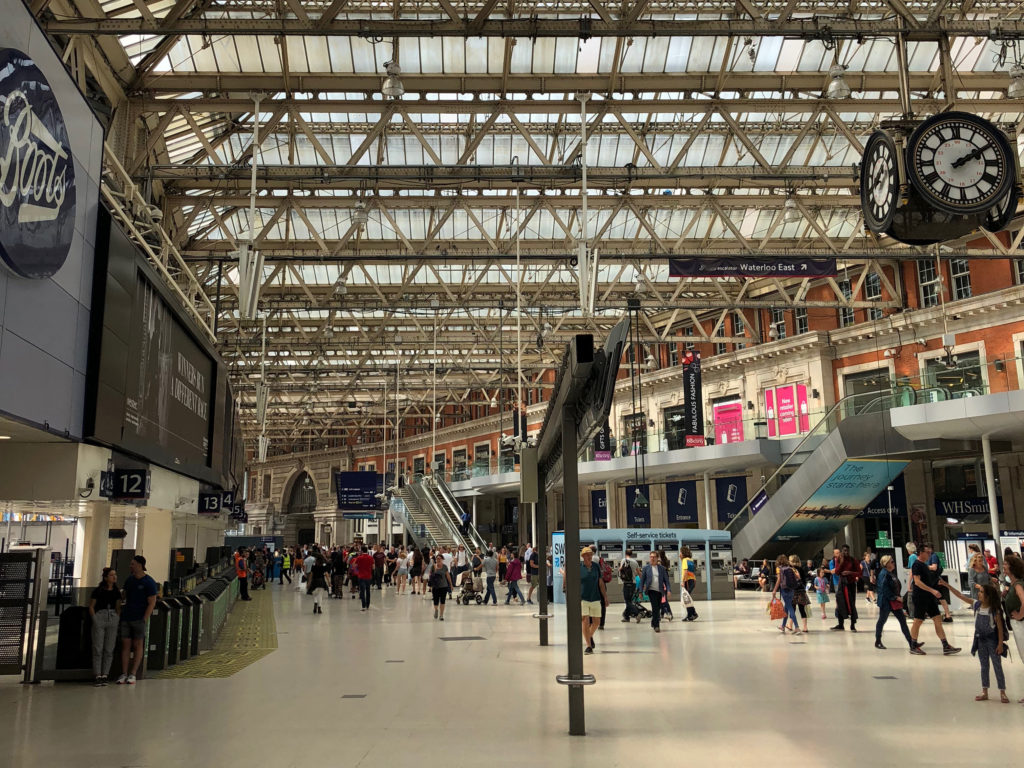
Inside, a glass and metal roof juxtaposes the surrounding Baroque station building. From here, I hopped on a train towards London’s historic financial district.
City of London
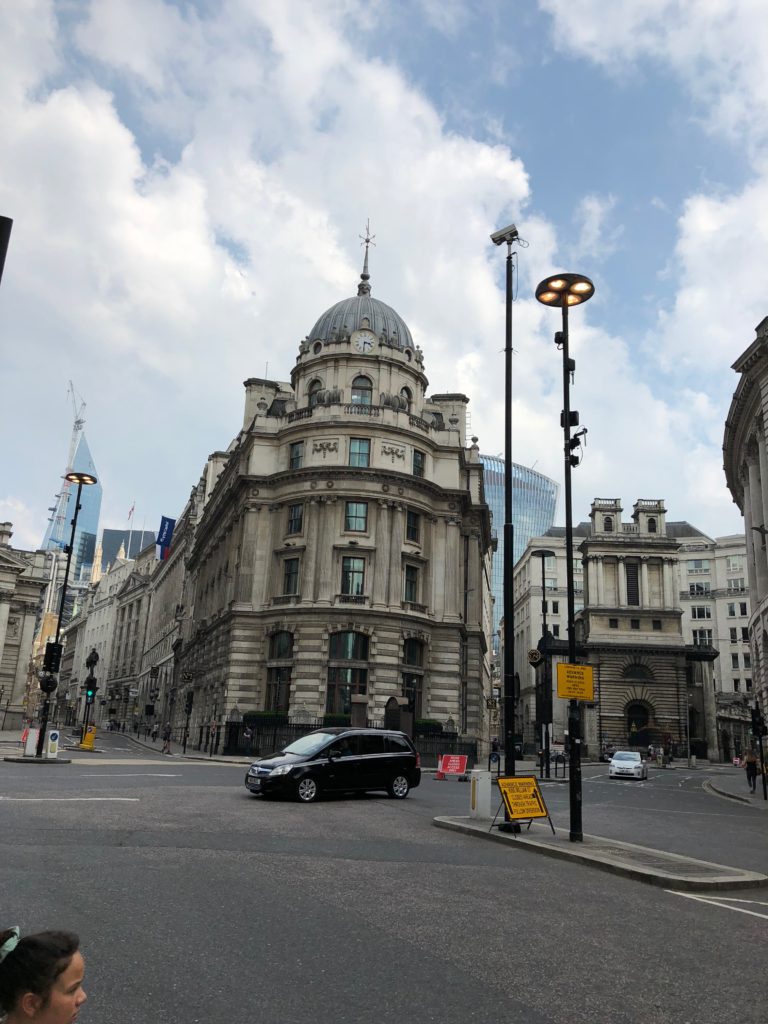
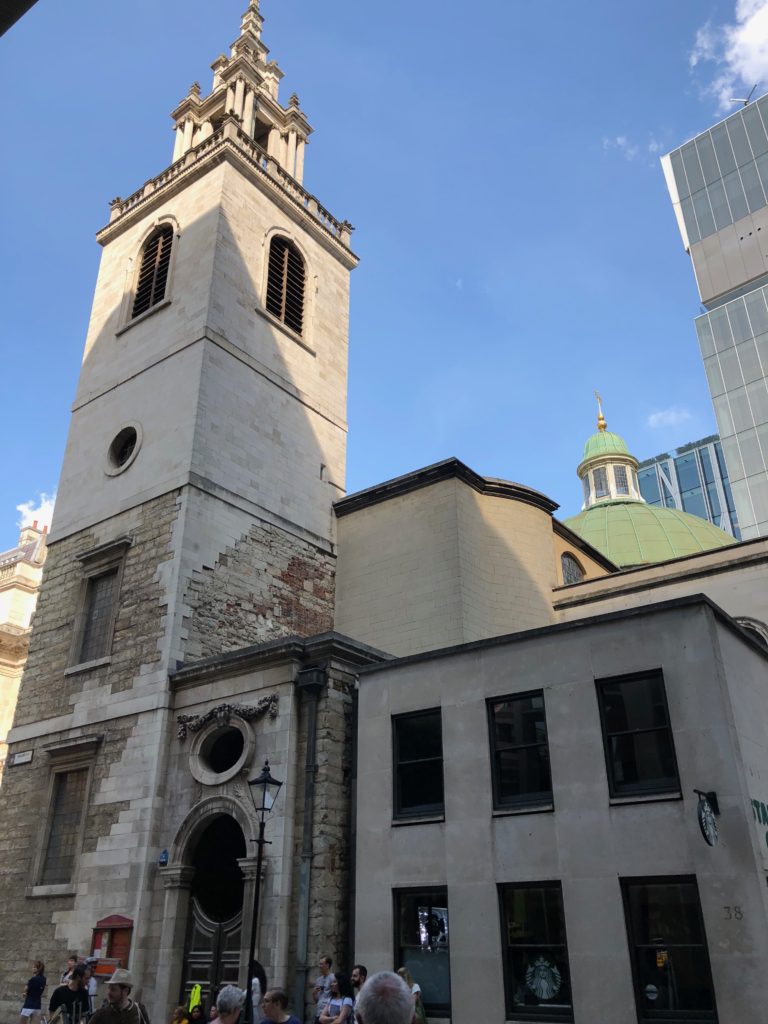
This district, also known as the “City of London,” is a place where old meets new. Low-rise, classical buildings are contrasted with tall skyscrapers that house some of the city’s top financial firms. One of the older buildings I passed by is a small church I studied in history class. St. Stephen Walbrook was designed by Sir Christopher Wren, who also designed the much larger St. Paul’s Cathedral. Sadly, the church is closed to the public on Sundays, so I did not get to enter.
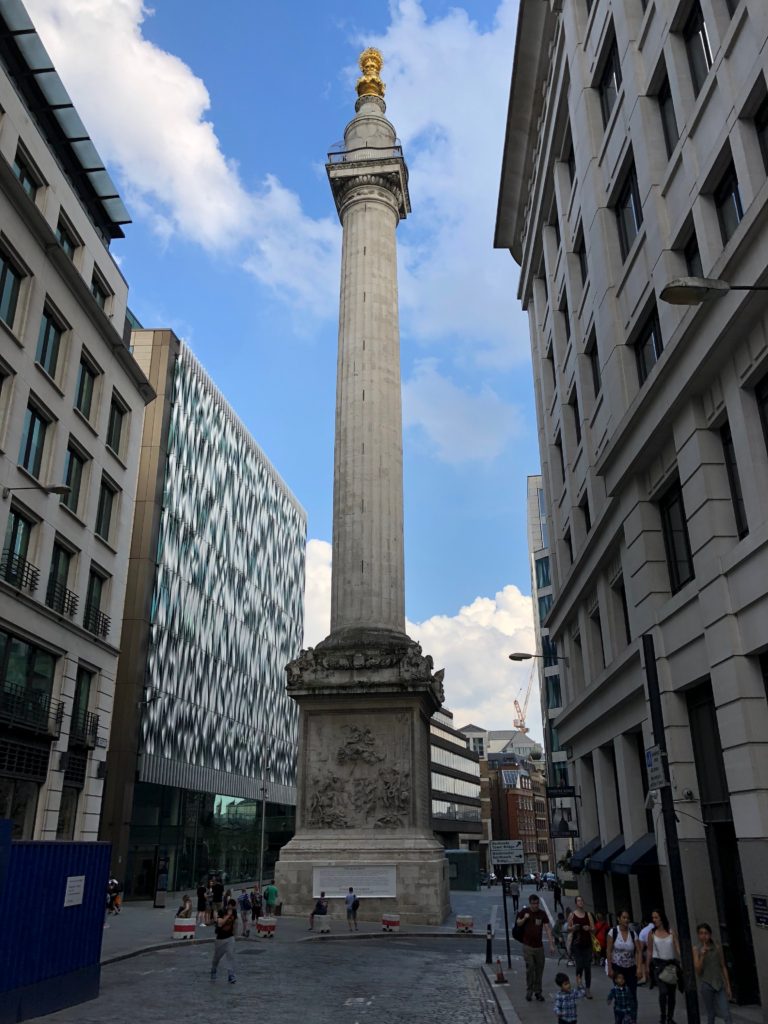
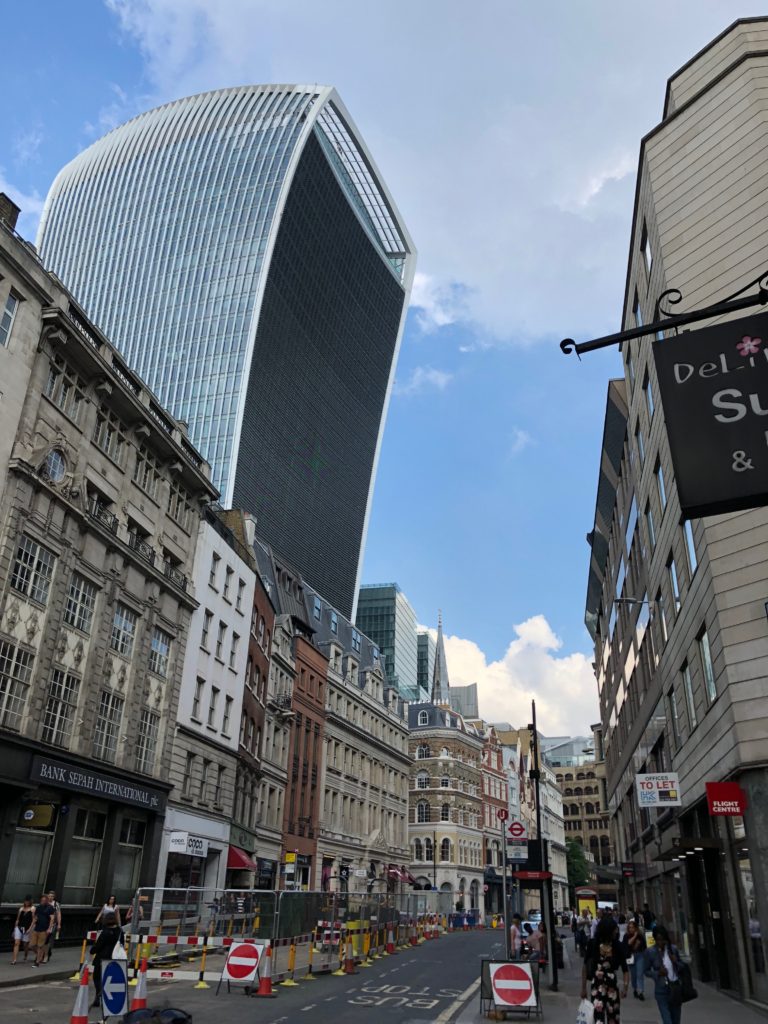
The city center also houses a monument dedicated to the Great Fire of London, which gutted the entire historic district. The monument stands tall, even when surrounded by newer skyscrapers. It is much like the monument in Trafalgar Square.
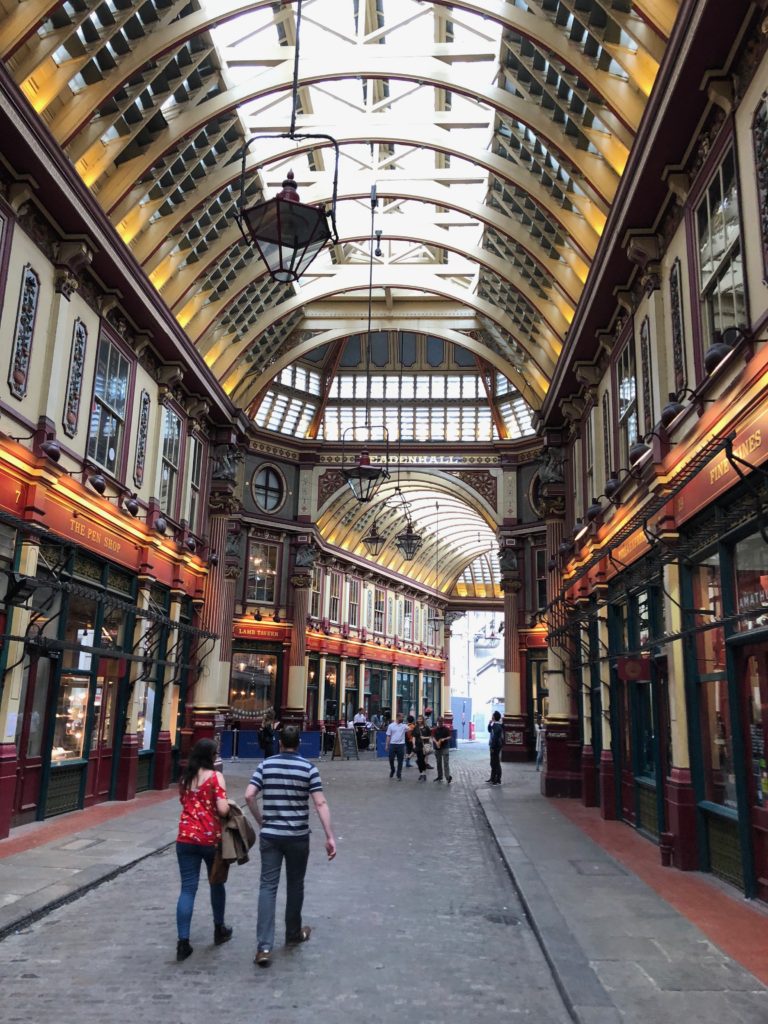
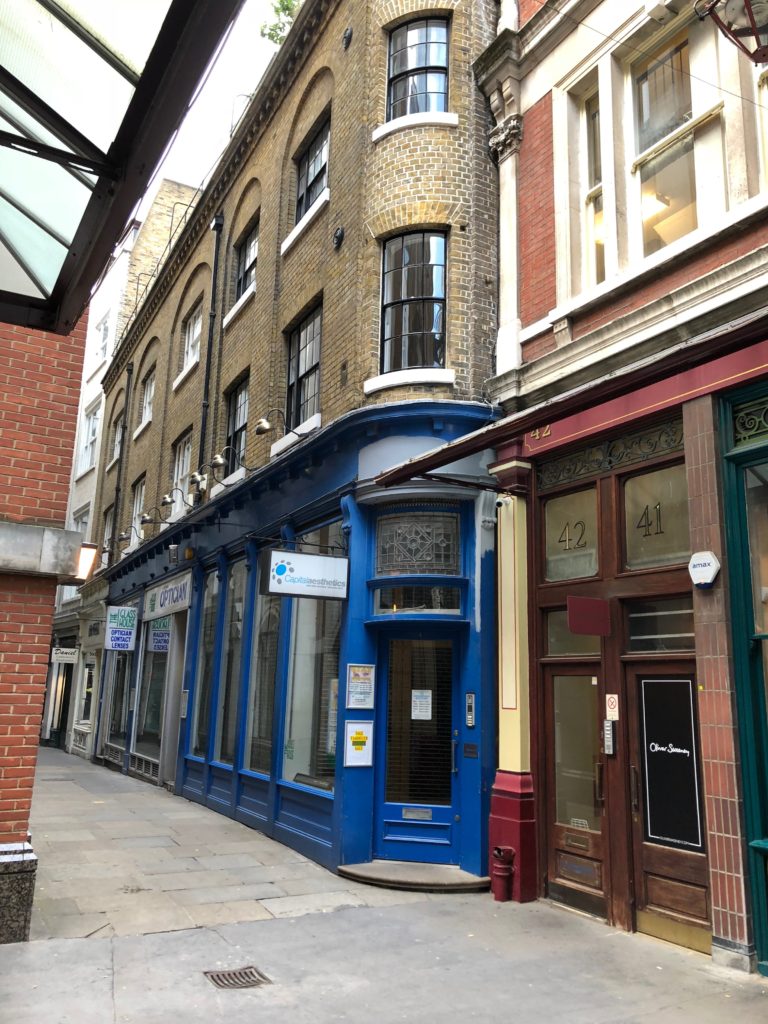
I dropped by nearby Leadenhall Market: a beautiful outdoor space designed by Sir Horace Jones. Inside, colorful buildings are painted in cream, maroon, and green, and a large ornate roof covers the entire market. I came here in search of one pub in particular: The Leaky Cauldron. This popular wizarding pub houses the entrance to the famous Diagon Alley, where young witches and wizards purchase all of their school supplies before heading off to Hogwarts School of Witchcraft and Wizardry. However, much like Platform 9 ¾, the pub is protected by a Muggle-Repelling Charm, so all I could see was an aesthetic clinic.
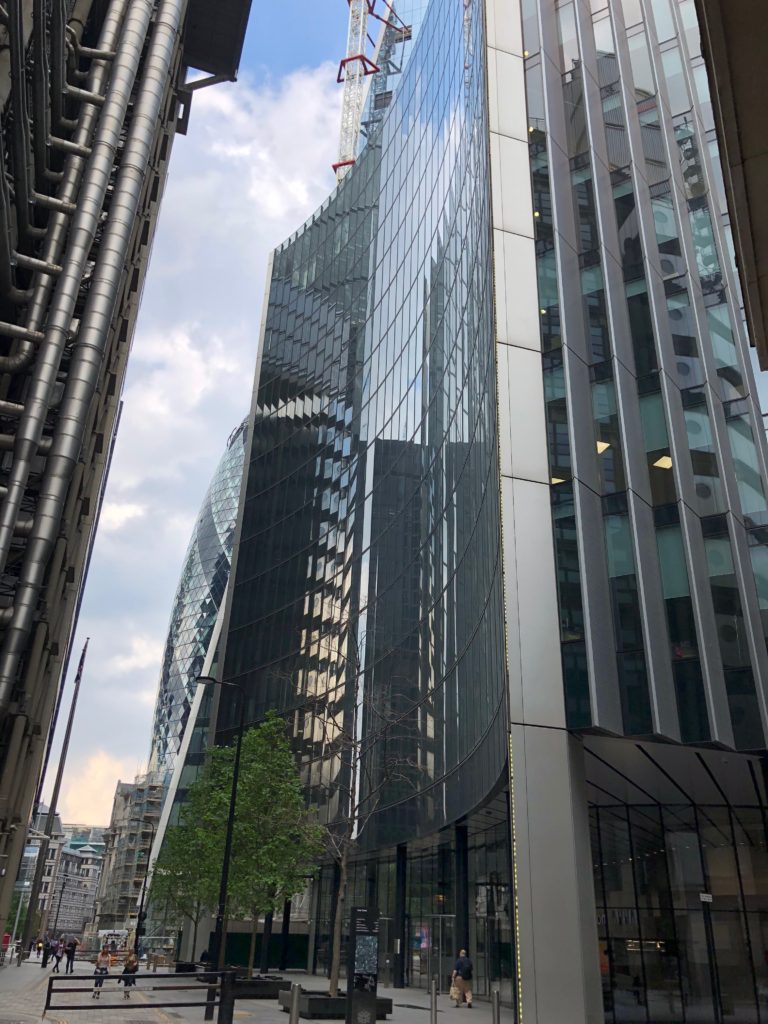
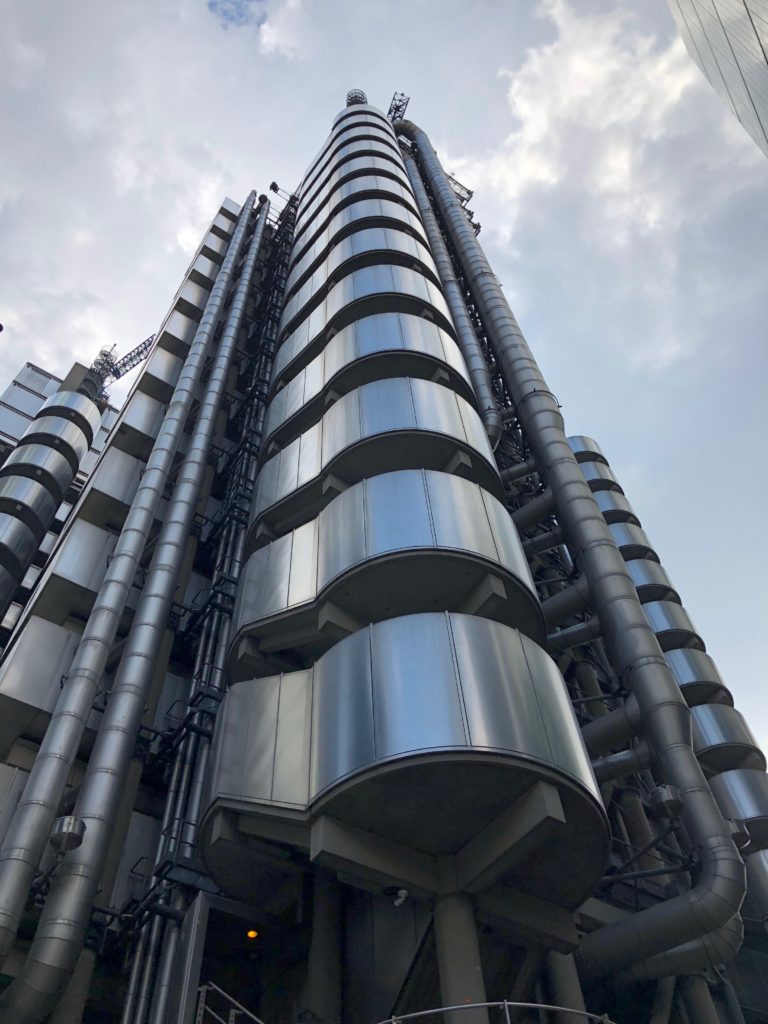
After failing to enter
The Gherkin
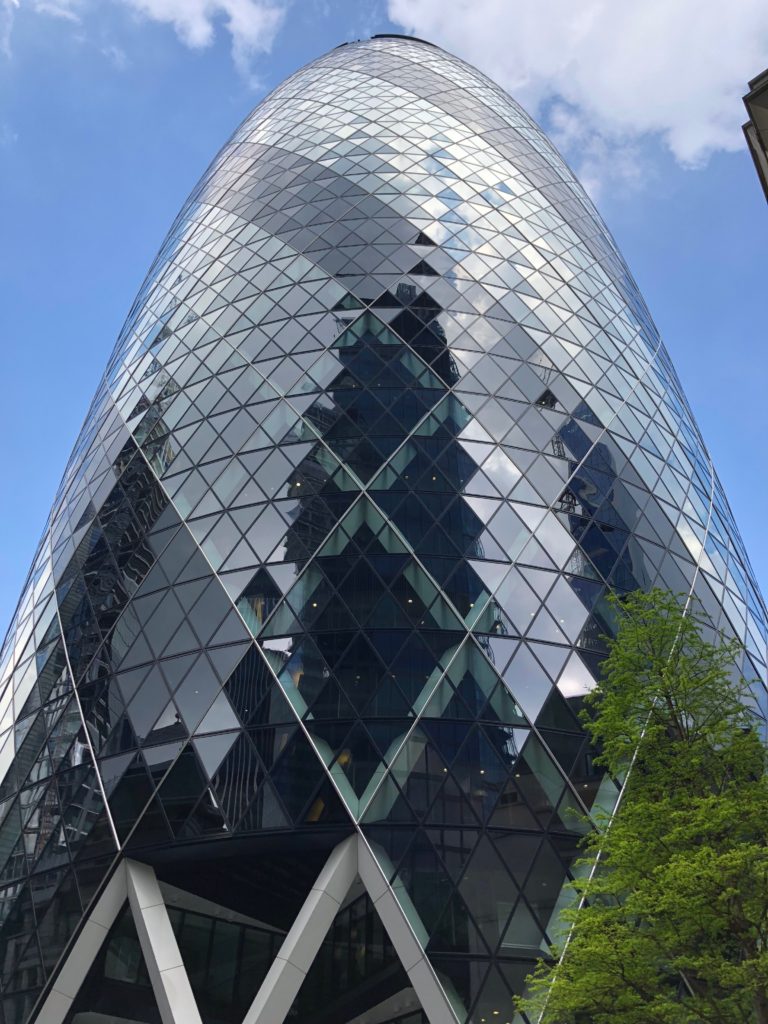
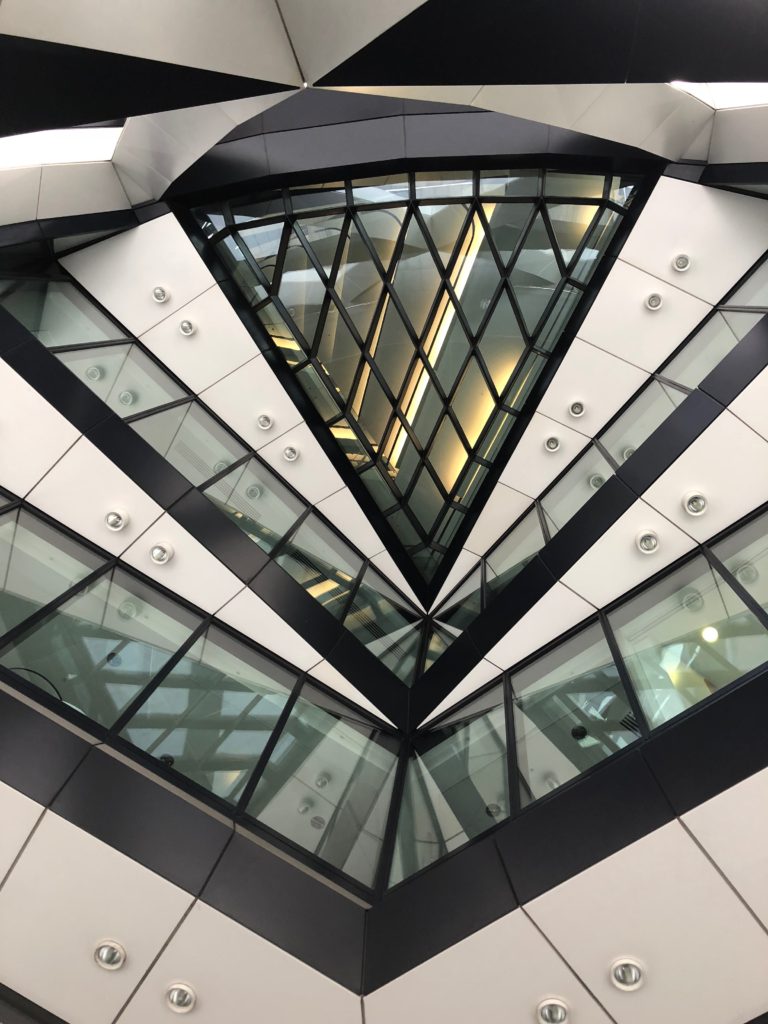
Around the corner from
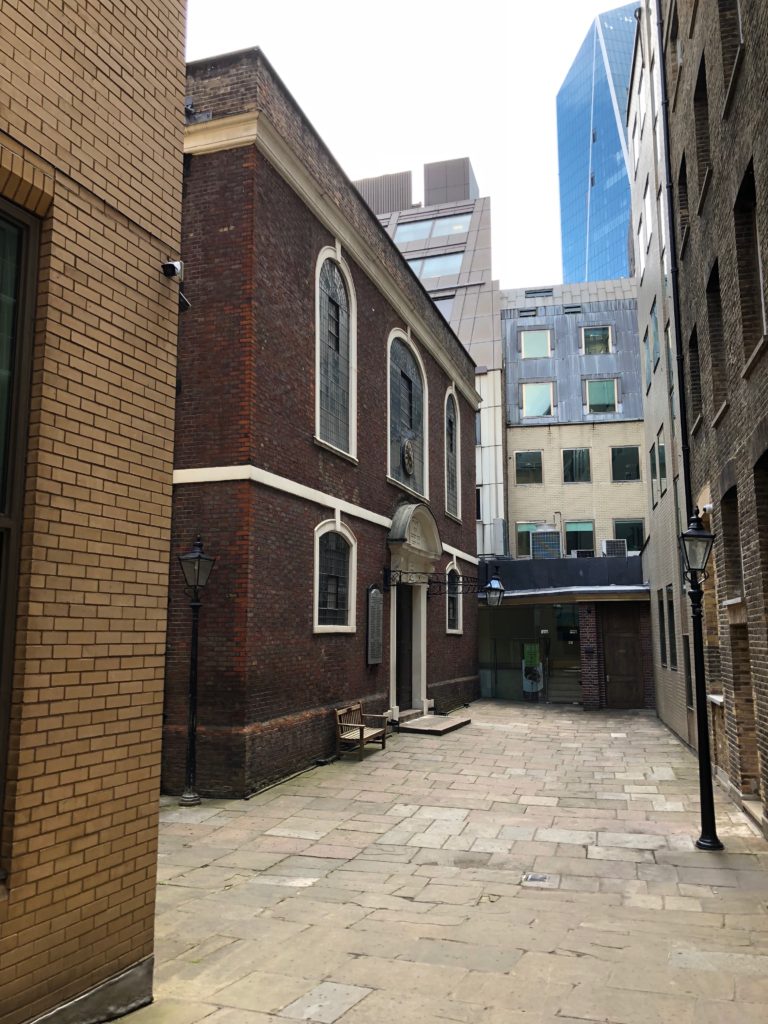
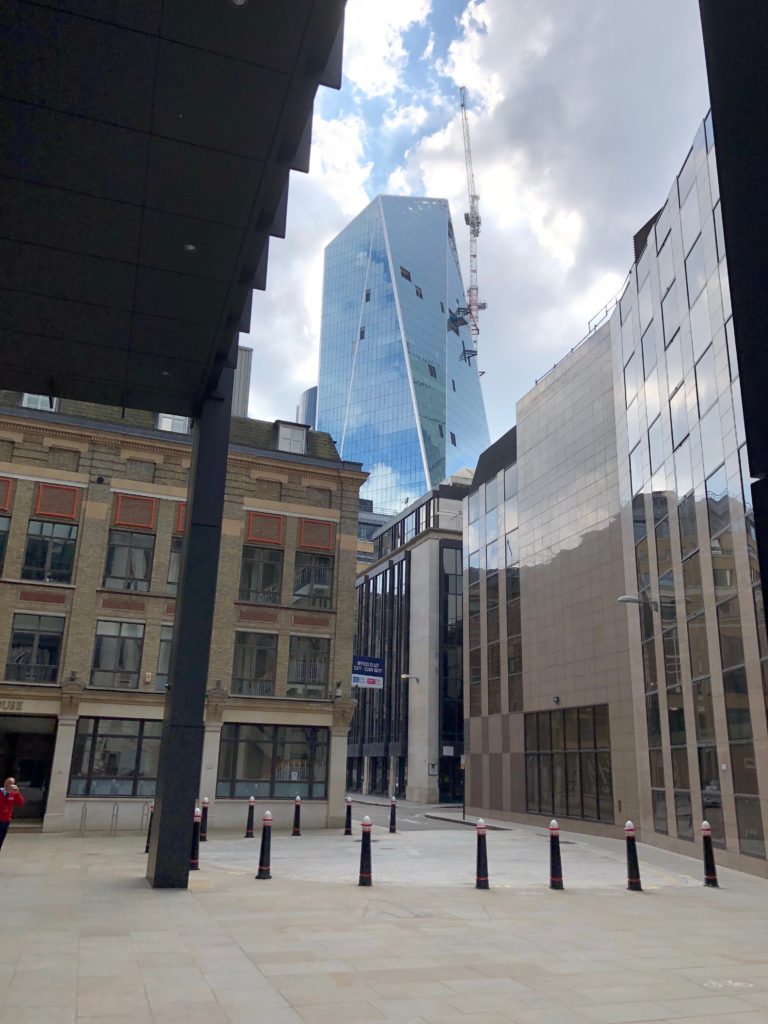
Hidden right behind the Gherkin is a small building that looks very similar to a place I saw on my previous trip. This place of worship, known as the Bevis Marks Synagogue, is the oldest synagogue in the United Kingdom. It is a near twin to Amsterdam’s Portuguese Synagogue. Unfortunately, it had closed for the day, so I will have to save it for my next time in the city.
Soho
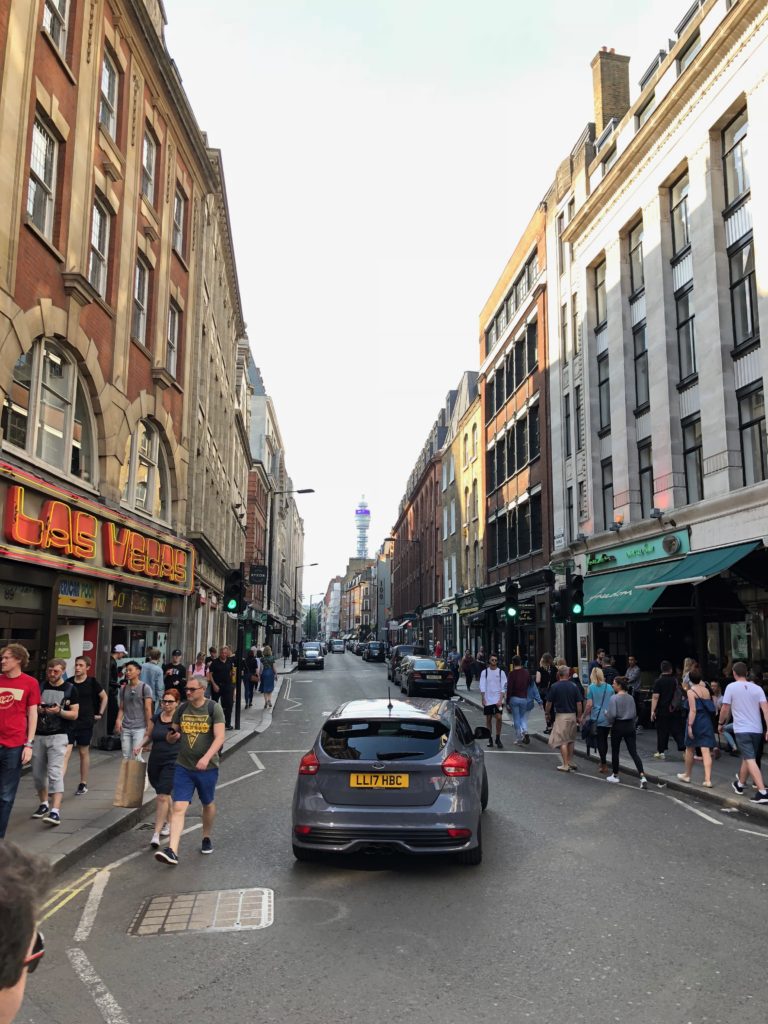
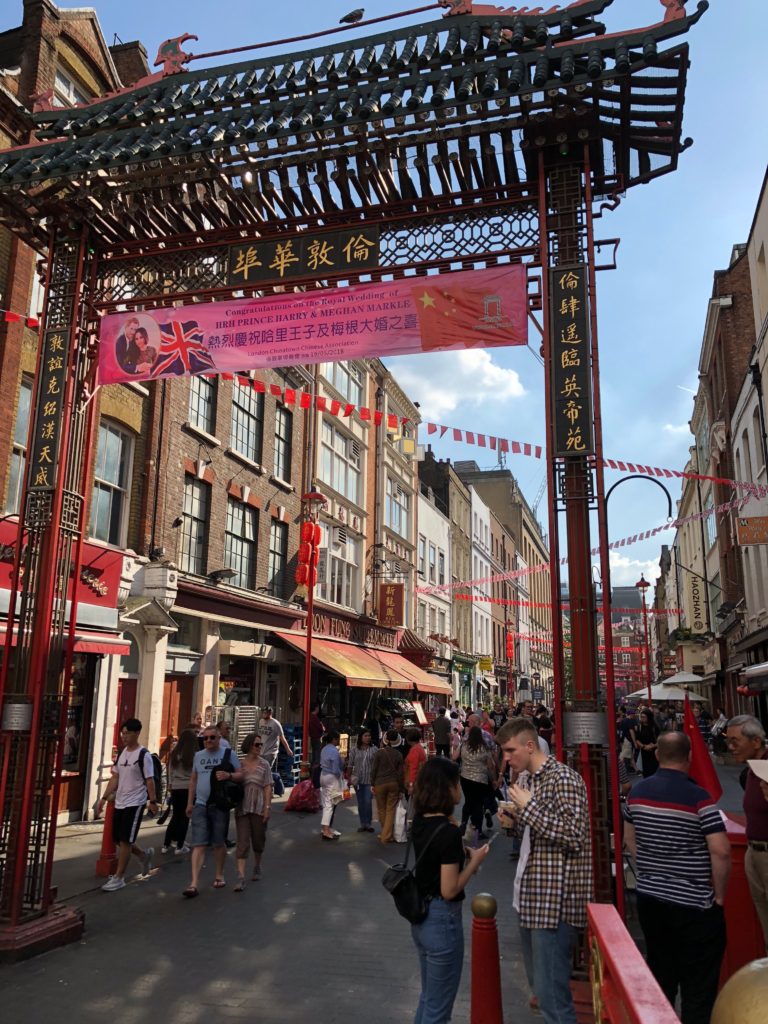
By early evening, I left the financial district and headed for one of London’s cosmopolitan neighborhoods: Soho. This neighborhood, located in the City of Westminster, has become one of the main shopping and entertainment areas of the city. It has also become a melting pot for all types of food. London’s Chinatown is located right nearby. Walking through this area definitely felt like a walk through Manhattan in New York.
On my way back to the hostel, I stopped by Paddington Station to pick up my train tickets for my ride over to Bath the following morning. I was certainly not ready to leave London: my new favorite city in Europe! This large, diverse metropolis has so much to offer, from its historical sites, classical and modern architecture, and charming neighborhoods. Best of all, the friends I made here will last a lifetime.
I spent my final hours at the hostel playing poker with my friends and drinking beer. We all exchanged our contacts and I knew we would be in touch as we went our separate ways.

3likewise
write my college paper https://term-paper-help.org/
pay to write papers https://sociologypapershelp.com/
help writing a college paper https://uktermpaperwriters.com/
write my paper for me in 3 hours https://paperwritinghq.com/
buying papers online https://writepapersformoney.com/
academic paper writers https://write-my-paper-for-me.org/
what is the best paper writing service https://doyourpapersonline.com/
will someone write my paper for me https://top100custompapernapkins.com/
help writing paper https://researchpaperswriting.org/
custom note paper https://cheapcustompaper.org/
college paper writing services https://writingpaperservice.net/
pay someone to write a paper for me https://buyessaypaperz.com/
instant paper writer https://mypaperwritinghelp.com/
help with your paper https://writemypaperquick.com/
pay to write paper https://essaybuypaper.com/
write my paper in 3 hours https://papercranewritingservices.com/
write my english paper https://premiumpapershelp.com/
help with paper writing https://ypaywallpapers.com/
help writing papers for college https://studentpaperhelp.com/
3stranger
coursework writing uk https://brainycoursework.com/
buy coursework https://courseworkninja.com/
coursework project https://writingacoursework.com/
design and technology gcse coursework https://mycourseworkhelp.net/
coursework paper https://courseworkdownloads.com/
courseworks help https://courseworkinfotest.com/
differential equations coursework https://coursework-expert.com/
coursework help https://teachingcoursework.com/
online coursework https://buycoursework.org/
online coursework https://courseworkdomau.com/
plenty fish free dating https://freewebdating.net/
12 single dating site https://jewish-dating-online.net/
dating site https://jewish-dating-online.net/
dating sites for totally free for usa https://onlinedatingsurvey.com/
singles dating https://onlinedatingsuccessguide.com/
dating near me free https://onlinedatinghunks.com/
free dating website https://allaboutdatingsites.com/
date online site https://freedatinglive.com/
online singles https://freewebdating.net/